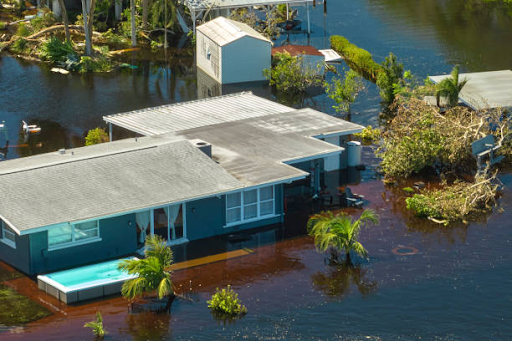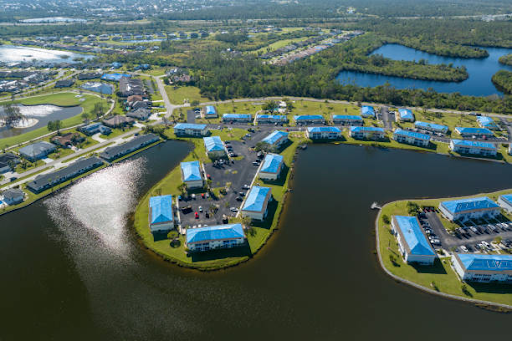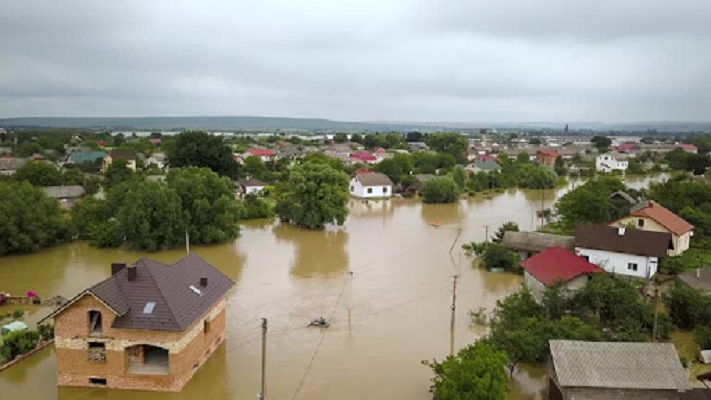When you’re shopping around and asking for flood insurance quotes in Florida, you’ll probably see different numbers for policies that seem similar. That shocks a lot of people. We’ve helped many homeowners who thought their flood risk was roughly the same as their neighbor’s, yet got a quote that was thousands of dollars apart. Why? Because there are a lot of moving parts that affect cost, coverage, and value.
If you’re looking for reliable flood insurance providers in Florida, or just trying to understand why some quotes cost so much more than others, we’ll break it down. We’ll cover what makes quotes vary, what to look out for, and how to pick a policy that fits, not just one that looks the cheapest.
What Makes Flood Insurance Quotes Vary So Much?
Not all flood policies are created equal. Even small differences in property or coverage can lead to big swings in price. Here are the biggest factors.
Location and Flood Zone
Where your home sits matters more than almost anything else.
- Special Flood Hazard Areas (SFHAs): If a home lies in a high-risk flood zone, premiums go up significantly. Homes in lower-risk zones get lower base rates.
- Proximity to water: If you’re right on the coast, near a river, or in a place that floods often, that drives the cost higher.
- Updated flood maps: FEMA regularly updates flood maps. If your property moves into a higher-risk zone, your quotes will reflect that.
Building Features and Construction
How your home is built has a major impact.
- Elevation: If your lowest floor is above the base flood elevation, you’ll likely pay less. If not, expect higher premiums.
- Foundation type: Homes built on piers, stilts, or raised foundations often get better rates than slab or crawl space foundations that are low.
- Materials used: Flood-resistant materials, reinforced structures, or features like flood vents can lead to discounts.
- Age and updates: Newer homes built to modern building codes, or older homes with upgrades (roof, windows, elevation) may cost less.
Coverage Amount and Deductibles
The amount of protection you pick and how much risk you accept matters.
- Dwelling coverage vs contents coverage: Do you want insurance for just the structure, or also your belongings? The more you include, the higher the cost.
- Deductible size: A higher deductible lowers your premium, but you pay more out of pocket if a flood happens.
- Policy limits: If you want extra coverage beyond NFIP limits, that costs more. Some flood insurance providers in Florida offer “excess flood” or private policies that let you boost limits.
Understanding the Difference Between Providers
When you gather flood insurance quotes in Florida, you’ll see two major categories of providers: the government program(s) and private companies. Each works differently.
Government / NFIP (National Flood Insurance Program)
- Most homeowners in Florida start with NFIP policies. These are federally backed and offer standard coverage.
- NFIP has fixed limits on how much dwelling and contents coverage you can get. If you need more than that, you’ll have to shop privately.
- NFIP follows FEMA’s rules strictly for flood zones, and doesn’t always allow very flexible coverage options.
Private Flood Insurance Providers
- Private insurers often let you tailor coverage more: higher limits, better deductibles, maybe even cover items NFIP excludes.
- Private policies may cost more, but sometimes they cost less, if your risk is low, or your home is well protected, or it has favorable features.
- Not all private insurers serve every area. Sometimes homes in high-risk zones have limited private policy access or very steep rates.
What to Check When Comparing Flood Insurance Quotes?
To find the right policy, you’ll want to look deeper than price alone. Here are things we always advise taking a close look at.
Coverage Details, Not Just Price
- What is covered vs what is excluded? Some policies exclude mold, some exclude certain landscaping or structural features.
- Replacement cost vs actual cash value: If parts of your home are destroyed, how much will the insurer pay?
- Contents coverage: Does the policy cover contents, and for how much? Some cheap quotes skimp on content.
Deductibles and Premiums Over Time
- The deductible matters: higher deductible = lower yearly cost, but more up‑front risk if flood occurs.
- Will your premium increase? Check renewal rate trends. With FEMA’s new rating and rising flood risk, many premiums are on an upward trend.
- Are there caps on increases? NFIP has some limits. Private companies may not.
How to Choose the Right Policy?
With all that in mind, here’s a process we follow and recommend when helping someone pick a flood policy.
Step 1: Know Your Risk & Requirements
- Find your flood zone, check FEMA’s maps.
- Determine whether your lender requires flood insurance.
- Decide how much dwelling and contents coverage you want. Think about what you couldn’t afford to replace.
Step 2: Gather Several Flood Insurance Quotes in Florida
- Don’t just get one or two, try NFIP and several private providers.
- Ask for quotes with comparable coverage limits and deductible structures so you can compare apples to apples.
Step 3: Evaluate the Total Cost and Value
- Sometimes a slightly more expensive annual premium comes with much better features, faster claims, broader coverage, better reputation. That can save you money long term.
- Don’t forget to estimate what you’d pay out‑of‑pocket in a claim plus premium, versus what you might save with a cheaper policy that leaves gaps.
Step 4: Check for Discounts and Mitigation Options
- Elevation certificates, flood vents, and raising utilities, all may earn discounts.
- See if your municipality or county offers flood mitigation grants or programs.
- Ask providers if they offer preferred risk policies or reduced premium options for homes that meet certain standards.
Step 5: Revisit Your Policy Regularly
- Flood risk doesn’t stay static. Map changes, climate changes, renovation work, you need to re‑evaluate every few years.
- When you do work on your home, like replacing the roof, windows, or elevating parts, save the documentation; this can affect your quotes next time.
Comparing Flood Insurance Providers in Florida
When you look for providers, keep these provider‑specific details top of mind.
| Feature | What to Ask / Compare |
| Availability | Does the provider serve your county/zip? Some private ones don’t work in certain high-risk or remote areas. |
| Claim Process & Customer Feedback | Are claims paid reliably? How fast? Read reviews from people who filed flood damage claims. |
| Policy Flexibility | Can you adjust deductibles and limits? Are flood maps updated, and will the provider reassess or allow changes? |
| Premium Increase Policies | How much have prior customers seen increases? Is the policy locked in, or subject to large rate hikes? |
By comparing these across providers, you avoid surprises.
Get Your Right Policy with Flood Insurance HQ
We believe every homeowner deserves protection without confusing jargon or hidden costs. That’s what we help you find.
- We’ll help you compare flood insurance quotes side by side, so you see what real value looks like.
- We connect you with top flood insurance providers in Florida that offer the coverage options you need, not just what they want to sell you.
- If you’re worried, uncertain, or just curious, reach out to us. We’ll walk you through what each quote means, what risks you bear, and how to pick a policy that gives peace of mind.
Contact Flood Insurance HQ today to start comparing quotes and understanding what policy fits your needs. Let’s make sure you don’t overpay. Let’s make sure you’re covered.
Final Thoughts
Prices will always differ among flood insurance quotes in Florida, and that’s okay. What’s important is knowing why they differ and what you’re getting for your money. By understanding your risk, comparing providers, checking coverage details, and looking out for mitigation options, you can choose a policy that protects you without burning you.
We at Flood Insurance HQ are here to help you do that. Don’t settle for a quote that leaves you exposed. Let’s compare smartly. Let’s get you coverage you can trust.
FAQs
- What are the different types of flood insurance?
Different types of flood insurance include NFIP (government-backed) policies and private flood insurance like Flood Insurance HQ.
- What is the standard flood insurance policy?
A standard flood insurance policy typically covers structural damage and limited personal belongings caused by flooding.
- Is private flood insurance always more expensive than NFIP?
Not always. Private insurance can sometimes cost more, but sometimes it offers better rates or coverage if your property is low risk, elevated, or has strong mitigation features.
- What is the best method of flood protection?
The best method of flood protection combines elevation, flood vents, barriers, and proper drainage systems.
- What coverage limits should I choose?
Aim for enough dwelling coverage to rebuild your home, and contents coverage for the things you couldn’t easily replace. Also, think about whether you want extra limits beyond what NFIP offers.
- What if the flood maps change and my area becomes high risk after I buy a policy?
Your premium may increase. But you’ll be better protected, since your coverage was established. And policy review or reassessment from providers sometimes helps; you may already qualify for some discounts or mitigation that helps dampen the jump.




